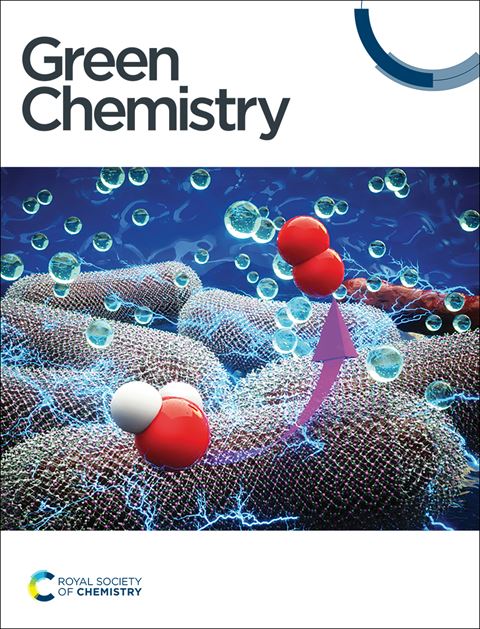Boosting the efficient alkaline seawater oxygen evolution reaction of iron oxide hydroxide via plasma-induced oxygen defect engineering†
IF 9.3
1区 化学
Q1 CHEMISTRY, MULTIDISCIPLINARY
引用次数: 0
Abstract
Obtaining hydrogen through direct decomposition of seawater is highly significant for alleviating the increasing shortage of freshwater resources. Nonetheless, a major obstacle to the oxidation of saltwater is the severe corrosion of anodes by Cl− ions. In this work, a wet chemical technique and argon plasma treatment were used to obtain defect-rich FeOOH/SS electrodes for the OER in a basic electrolyte and simulated seawater. The findings from EPR and XAFS showed that a significant number of oxygen vacancies were generated through the plasma treatment. These vacancies promoted the activation of lattice oxygen during the oxidation of water. The findings showed that plentiful oxygen vacancies in P-FeOOH/SS provided a substantial number of active sites and facilitated efficient electron transfer, both of which greatly increased OER activity. Notably, when the electrolyte was simulated seawater (1.0 M KOH and 0.5 M NaCl), the overpotential reached 278 mV at 10 mA cm−2. Under these conditions, the Tafel slope was measured at 32.66 mV dec−1. Furthermore, the stability was maintained at 50 mA cm−2 for more than 100 hours. Theoretical calculations showed that the high catalytic activity was primarily due to the positive effects of oxygen defects on the electron density and the d-band center of the active site. This research presented a straightforward approach for the development of efficacious defect-rich electrodes for alkaline seawater electrolysis.

通过等离子体诱导氧缺陷工程促进氢氧化铁的高效碱性海水氧进化反应†。
本文章由计算机程序翻译,如有差异,请以英文原文为准。
求助全文
约1分钟内获得全文
求助全文
来源期刊

Green Chemistry
化学-化学综合
CiteScore
16.10
自引率
7.10%
发文量
677
审稿时长
1.4 months
期刊介绍:
Green Chemistry is a journal that provides a unique forum for the publication of innovative research on the development of alternative green and sustainable technologies. The scope of Green Chemistry is based on the definition proposed by Anastas and Warner (Green Chemistry: Theory and Practice, P T Anastas and J C Warner, Oxford University Press, Oxford, 1998), which defines green chemistry as the utilisation of a set of principles that reduces or eliminates the use or generation of hazardous substances in the design, manufacture and application of chemical products. Green Chemistry aims to reduce the environmental impact of the chemical enterprise by developing a technology base that is inherently non-toxic to living things and the environment. The journal welcomes submissions on all aspects of research relating to this endeavor and publishes original and significant cutting-edge research that is likely to be of wide general appeal. For a work to be published, it must present a significant advance in green chemistry, including a comparison with existing methods and a demonstration of advantages over those methods.
 求助内容:
求助内容: 应助结果提醒方式:
应助结果提醒方式:


